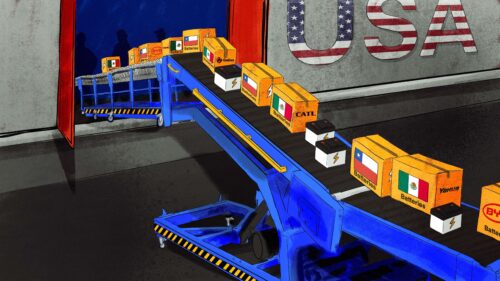Why are China’s innovative drug companies finding it so difficult to raise money?
Chinese pharma companies have high hopes of dominating the future of new drug development. But developing innovative treatments is costly and time-consuming, and investors don’t seem to have the necessary patience.

On October 8, a new drug to treat type 2 diabetes called dorzagliatin was approved for use in China by the National Medical Products Administration. The drug is the world’s first glucokinase activator for treating diabetes, and its approval should have been a major milestone for its developer, Hua Medicine 华领医药. Indeed, the founder of Hua Medicine believes that it is the first “globally innovative” drug launched in China (中国首发的全球首创新药), and he has great expectations for the drug’s future market potential.
But on October 10, Hua Medicine’s share price dropped by 24%, and on October 11, it dropped by a further 19.40%.
Why? The reason may be that investors are unconvinced by dorzagliatin’s clinical data, but the disconnect between the scientific achievement and the financial reward also seems to be a feature of Chinese pharmaceutical companies that are attempting to launch new drugs.
Funding crunch
Back in April 2018, the Hong Stock Exchange implemented its largest listing reform in decades when it revised the main board listing rules to allow pharmaceutical companies without profit to conduct initial public offerings (IPOs). In 2019, the Shanghai Stock Exchange Science and Technology Innovation Board (a.k.a. STAR market, which was launched to incentivize high-tech companies to go public) also changed its rules to allow innovative pharmaceutical companies to list on China’s A-share market even if they are not profitable.
The regulatory system for new drug approval has also been streamlined in recent years: The latest edition of the drug registration law, passed in 2020, provides four channels for accelerated drug registration. And the policy environment has become generally supportive: In 2021, the government passed the 14th Five-Year Plan for Pharmaceutical Industry Development as well as one for Promoting the Bioeconomy and Biotechnology.
All this has started to pay dividends: A total of 44 new Chinese drugs (excluding traditional Chinese medicine and vaccines) were launched in 2021, a year-on-year increase of 175%, and a number larger than the total number of new drugs launched in China in the preceding five years.
Yet funding and stock market enthusiasm for drug innovation seems to have dried up. From mid-2021, a “cold winter” descended on the pharmaceutical capital markets, pharmaceutical stocks have generally declined, new stocks have performed poorly, and the number of listings has decreased. According to the pharmaceutical investment database Pharmcube 医药魔方, in the first half of 2022, the number of pharmaceutical IPOs decreased by 45.5% year-on-year.
In the secondary markets, the number of refinancing events has decreased by 57.8% year-on-year and the performance of listed companies has been poor. In May 2022, one Chinese newspaper found that the share prices of more than 90% of Hong Kong–listed biotech companies (listed under the HKSE’s Chapter 18A) had declined significantly, with an average drop of 42.91%. In August 2022, another media outlet reported that of the 25 of 32 18A companies that had released interim financial reports for 2022, only four companies achieved increases in revenue. The remaining 21 companies all reported decreases. Five of the 25 companies reported that they did not have enough cash on hand to last for one more year, and 10 companies did not have enough cash to last for two more years.
As a result, many of China’s drug companies have begun to cut back on their drug development pipelines. In June, Clover Biopharma 三叶草生物, for example, announced that it would suspend work on a tumor drug and two biomedicine drugs. In August, Everest Medicines 云顶新耀 announced the suspension of a number of cancer drug projects. Various other companies have recently made similar announcements, including Harbour Biomed 和铂医药, CSPC Pharma 石药集团, and Hainan Boao Medical Technology 海南博鳌医疗科技.
Why pharma is a tough business
One of the problems is competition: From 2021, a large number of pharmaceutical companies released many new drugs, which suppressed prices, and contributed to the lack of investor enthusiasm.
Demonstrating a clear value proposition to investors is difficult to achieve at the best of times in the pharmaceutical industry. Clinical research for new drugs can take up to five years, and this stage of research and development consumes the most funding. Even after a drug is approved for sale, it still needs to be commercialized, which means demonstrating beyond any doubt their effectiveness to the healthcare industry. Finally, the company needs to maintain quality control once production scales up. Entering foreign markets is the next challenge.
Undervalued companies?
Despite the difficult environment and the industry funding crunch, some companies are finding success. One example is InnoCare Pharma 诺诚健华, which was established in 2015. The company has produced orelabrutinib, a Bruton’s tyrosine kinase (BTK) inhibitor drug, which was approved by the National Medical Products Administration in January 2021. In 2021, InnoCare Pharma sold 41,209 boxes of this drug for a total of 214.66 million yuan ($29.92 million), and the drug has now been approved for medical insurance in China. In September 2022, the drug was approved for priority review for treating lymphoma by the Center for Drug Evaluation (CDE) at the China National Medical Products Administration.
Although the company is not yet profitable, over the last year, Innocare Pharma’s revenue has expanded by over 1,000%. Amazingly, investors remain unconvinced: Its stock price in Hong Kong declined by 61% over the same period. Still, according to one analysis, the stock is undervalued. In September 2022, the company completed a dual listing on the STAR market at the Shanghai Stock Exchange (SSE).






